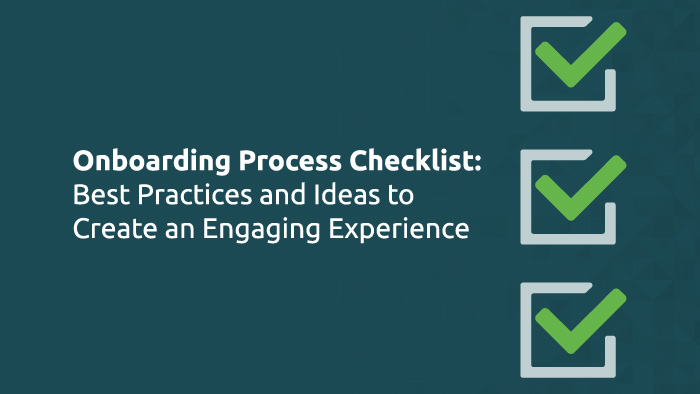-
Q: Why is new employee training important?
A: Properly training new employees will help you ensure a smooth onboarding process, boost productivity, and improve employee retention because It helps new hires understand their roles, company culture, and feel confident in their abilities. -
Q: What are the key components of a successful new employee training program?
A: A successful training program should be built around strong pillars like: clear goals and objectives, relevant content, different training methods, mentorship opportunities and lots of feedback. -
Q: How can organizations enhance the new employee training experience?
A: To give your employees the best training and onboarding experience and get them ready to dive into their work as soon as you’d like consider providing them with pre-boarding materials, socialization opportunities, regular check-ins, and a clear and easy way to provide and get feedback.
Training and career development are at the top of the list of factors workers take into consideration when looking for a job. In fact, according to LinkedIn’s 2023 Workforce Learning Report, 94% of employees say they would stay at a company longer if it invested in helping them learn.
Learning is more important today than ever before. LinkedIn’s research found that roughly a quarter of Gen Z and millennials say learning is the number one thing that makes them happy at work, and over a quarter of Gen Z and millennials say the number one reason they’d leave their job is because they did not have the opportunity to learn and grow.
The days of simply coming up with a generic new hire training plan template on Excel are long gone. It is imperative that you make a good first impression with your training program to show new employees you can offer them the development they’re looking for.
What New Hire Training Should Look Like
You’ll want to develop an onboarding and training program that will help new hires get familiar with the company right away.
The new employee training process includes more than just filling out new hire paperwork. Employee training can refer to onboarding, compliance training, role-specific training, process training, and elective learning. Completing this training will benefit the new employee throughout their entire tenure with your organization.
Onboarding gives employees an introduction to the company. This should include learning the mission, vision, and values of the company. Compliance training will be done throughout the new hire’s time with the company and ensure they stay up-to-date on laws, regulations, and policies that apply to their job responsibilities. Role-specific and process training will get the employee acclimated to what types of jobs they will be completing within their role and how to do them. And elective learning enables employees to develop the skills and competencies they’re most interested in building.
In summary, new hire training shouldn’t end when onboarding ends. It’s just the beginning!
Goals of New Employee Training
Introducing employee training and development can have powerful benefits for your company. The goals of your program can help your organization to:
- Teach employees to be problem solvers as they learn how to be creative and innovative, enabling them to confidently take on tasks
- Improve employee engagement, leading to higher retention of staff
- Increase efficiency in processes, resulting in financial gain
- Reduce the frustration of not knowing how to complete tasks or use tools
- Increase engagement by providing opportunities to build skills employees are interested in
While exact onboarding tasks may differ, there are a few best practices you can follow to help you achieve all of these goals. Let’s take a look at these best practices…
Establish Your Process for Training New Employees
If you don’t already have a new hire training program in place, you need to start by figuring out what every employee needs to know. This can be fairly time-consuming, but it’s an important foundation for the rest of the training process if you want to truly train employees effectively.
1. Identify Tasks or Procedures Employees Need to Know
Talk to managers in each department to find out what type of information would be beneficial for which roles. This is also a great way to identify what different roles can learn about other departments to increase inter-departmentalism. Make these tasks and steps as concrete as possible and have another person who isn’t in the role check for clarity.
Product and service training is beneficial for not only the sales team but all members of your organization. Product knowledge ensures employees can speak to their product effectively and enthusiastically. This builds trust and confidence. It also means they can answer any question that is thrown their way.
If you want to beat the competition, your employees need to fully understand the competition you’re up against. By evaluating your industry you’re able to: clearly identify what makes your company, product and services unique; determine the sales and marketing strategy that makes sense for your company; and understand what it takes to win your competitors’ clients.
2. Identify Who Should Conduct the Training
It’s unlikely that one person will train every employee in every skill. Choose the best person for the job, whether that’s a specific training professional, a manager, or a peer.
3. Allocate Resources and Supplies
Training new hires is essential. Provide tools and time to learn new procedures and practices. You can’t expect new employees to be productive right away without the means to accomplish their tasks.
4. Train
This one word could encompass a range of activities, such as online training, classroom training, and hands-on practice. Identify the best way to deliver information. Use varied learning messages: There is no one-size-fits-all in the training world.
5. Check-in for Understanding
Check employee understanding, post-training, by assigning assessments about the training they received. Using learning reinforcement boosts retention and helps to uncover if employees feel comfortable with what they learned or if they need more training.
For more tips on how to get the most out of your new hire orientation, check out our blog: How to Make New Hire Orientation Informative Yet Engaging
Ensure All Managers Use a New Hire Training Checklist
To make sure your employees are all receiving the proper training, no matter their location, creating a new employee checklist can help. The best employee onboarding checklist starts before the employee walks in on their first day and continues for at least six months.
Additionally, consider creating a training plan template for new employees that managers and leaders can use and iterate on as you onboard new staff members. This will ensure the training experience is uniform across different parts of the business.
Want a deeper dive into what you should include in your onboarding? Check out this infographic:
Train for Culture
A company with a good culture can be hard to find. Showcase what your company culture is from the start, since sharing this is important to get employees involved quickly.
For your company’s vision to be visible to employees everywhere, it needs to be concise and relatable to every employee at every level. A vision statement shows employees the ideal state that the organization wishes to achieve.
A mission-driven company is more likely to succeed. Your mission is your company’s purpose. It’s why you do what you do. Making your mission known to employees will help them to share in the success of the entire organization.
Much like your mission supports your vision, values help you achieve your mission. Concrete values define expectations. They explain how the company expects the individual employee to work. At BizLibrary we have seven values we instill in everything we do.
For example, “Smarter Every Day,” is a value that shows learning is at the core of what we stand for at BizLibrary. We strive to learn something new and improve every single day. We incorporate “Smarter Every Day” into our new employee training by playing five facts and a fib. In this game new hires share with the others in the orientation group six things about themselves, five are true and one is a fib. The other participants get to learn more about each other by guessing which one is the fib. Learning something new every day isn’t always job-specific, it encompasses relationships, too!
Check Back in on New Hires Often
Finally, one of the best practices for employee onboarding is to show a continued commitment to their growth. For many employees, they won’t settle into a new job until six months or more have passed.
Be highly available for those six months, schedule weekly time to touch base, chat about any questions they have, and provide them with the resources they need.
Managers can check in on how well employees are understanding their tasks and tools and talk about what they could learn to increase efficiency and effectiveness.
After six months have passed, schedule routine times to continue to check-in.
Managers should also ask questions to determine if there are other areas of learning employees are interested in, and where they could take on other responsibilities.
Continual learning, whether it’s soft skills and personal development, or specific role-based skills, are what help keep employees engaged and doing great work.
Using Learning Technology for New Hire Training
Next, let’s dive into how using a learning platform can streamline training. More organizations are adopting online learning to train their workforce. This has created the need for learning platforms to host courses that are accessible to employees from anywhere.
Here are some of the ways you can use a learning platform for all your training, whether it’s a new employee’s first day or six months into their role.
Provide Compliance Training That Is Up to Date and Consistent
Compliance training changes frequently. Using an online content provider who regularly updates their content can eliminate the time spent trying to ensure that the required training meets current standards, and completion can be tracked all in one place. Using online courses also ensures training is consistent for all employees and locations, whereas classroom compliance training may not always deliver the same information.
House Custom Content for Company-Specific Training
With a custom library and the ability to create proprietary lessons for your company-specific training, all your learning becomes accessible from one place. The ability to upload custom content is often a feature of more robust platforms (like an LMS), so if you’re looking for this specifically, be sure to ask about it when shopping for learning technology.
Provide Off-the-Shelf Content on Skills Needed For Any Role
The biggest benefit of off-the-shelf training is that it’s already created for you. You are provided with professionally produced, engaging training at a fraction of the cost of doing it yourself; not to mention all the time saved! An off-the-shelf content library can help your employees to learn everything they need for their roles, including soft skills, leadership and management, software, customer service, and much more.
Allow Employees to Explore and Guide Independent Learning
With an online content library, your employees have the freedom to browse and learn other skills they may be interested in. These competencies don’t have to be related to their current role, but it gives them the opportunity to acquire new skills which could prove very useful as they grow into new responsibilities and roles.
If you’re interested in more tips on what to include in your new employee training, check out this Webinar!

